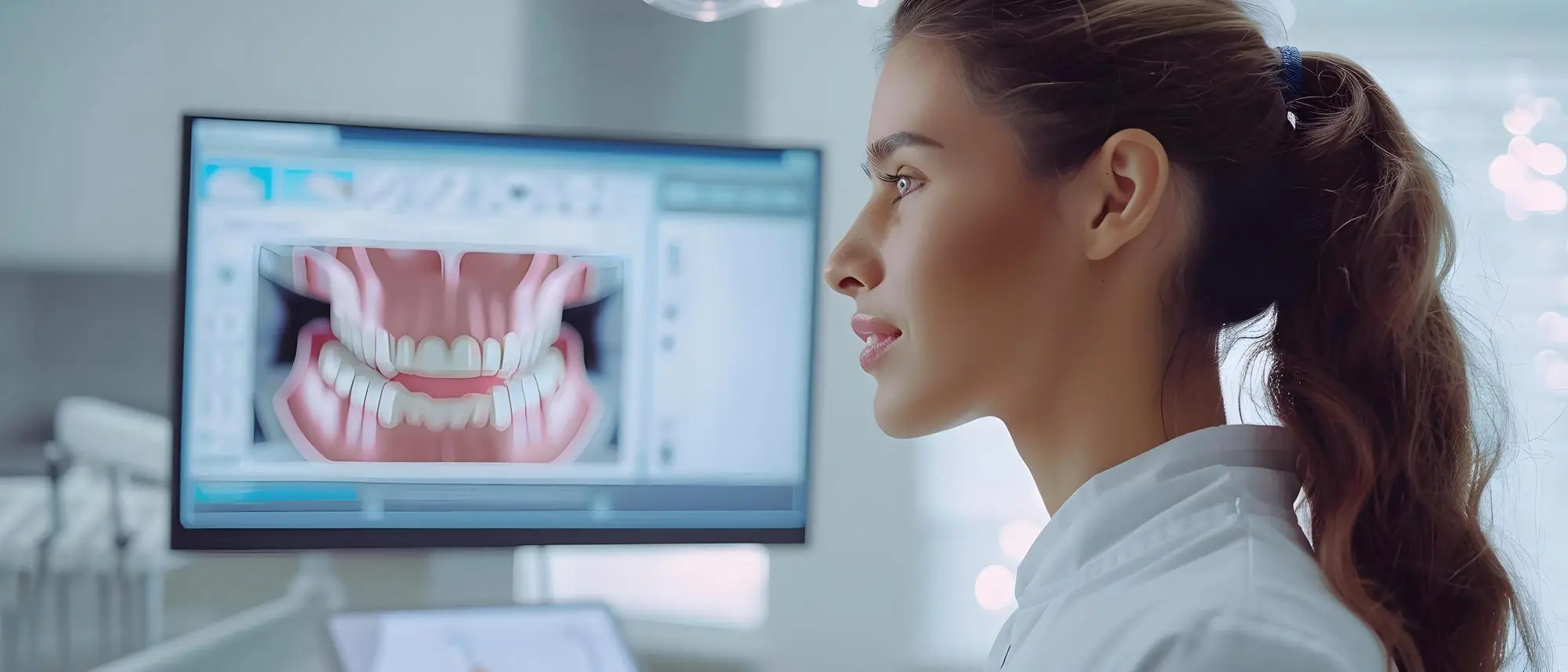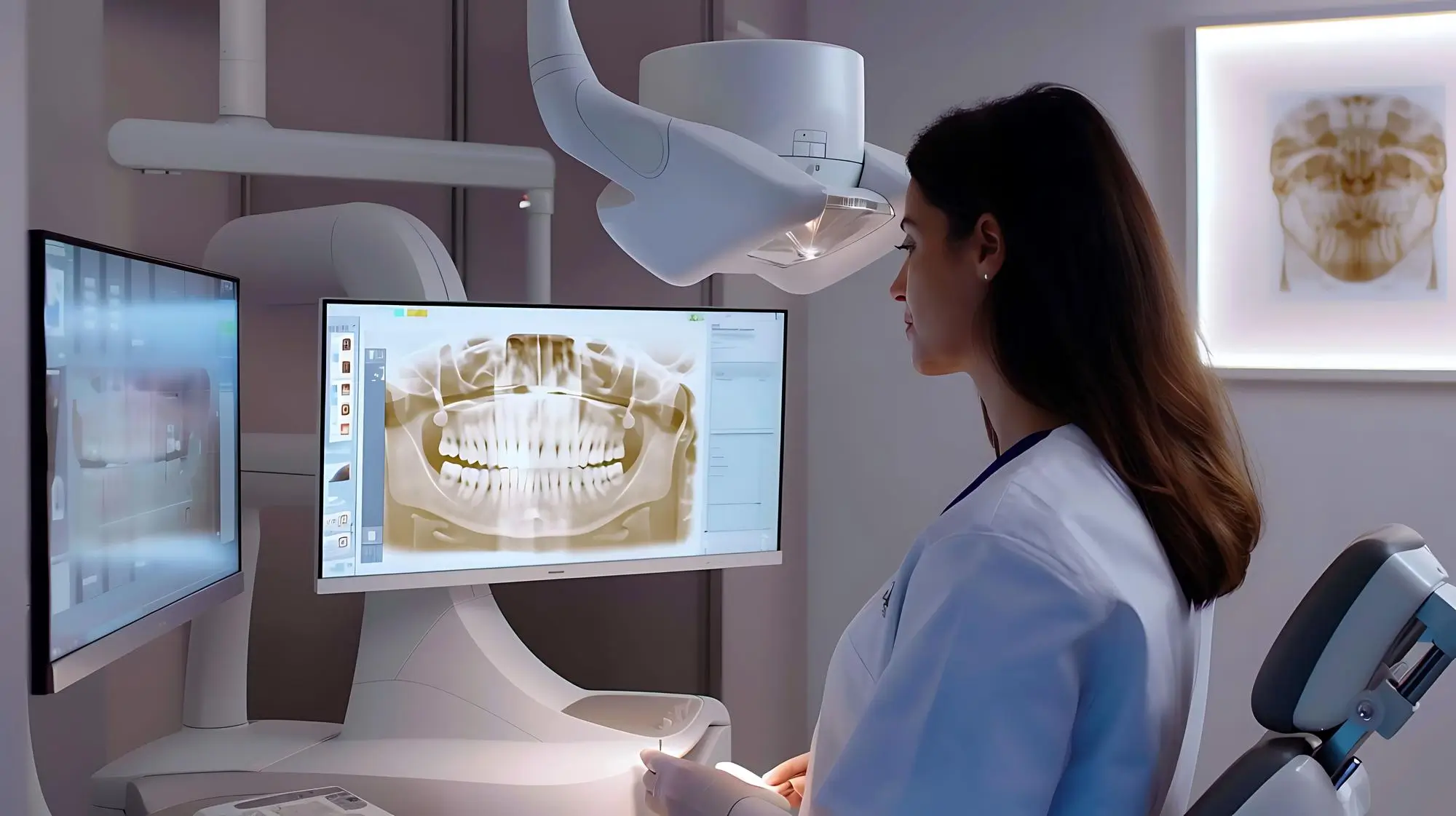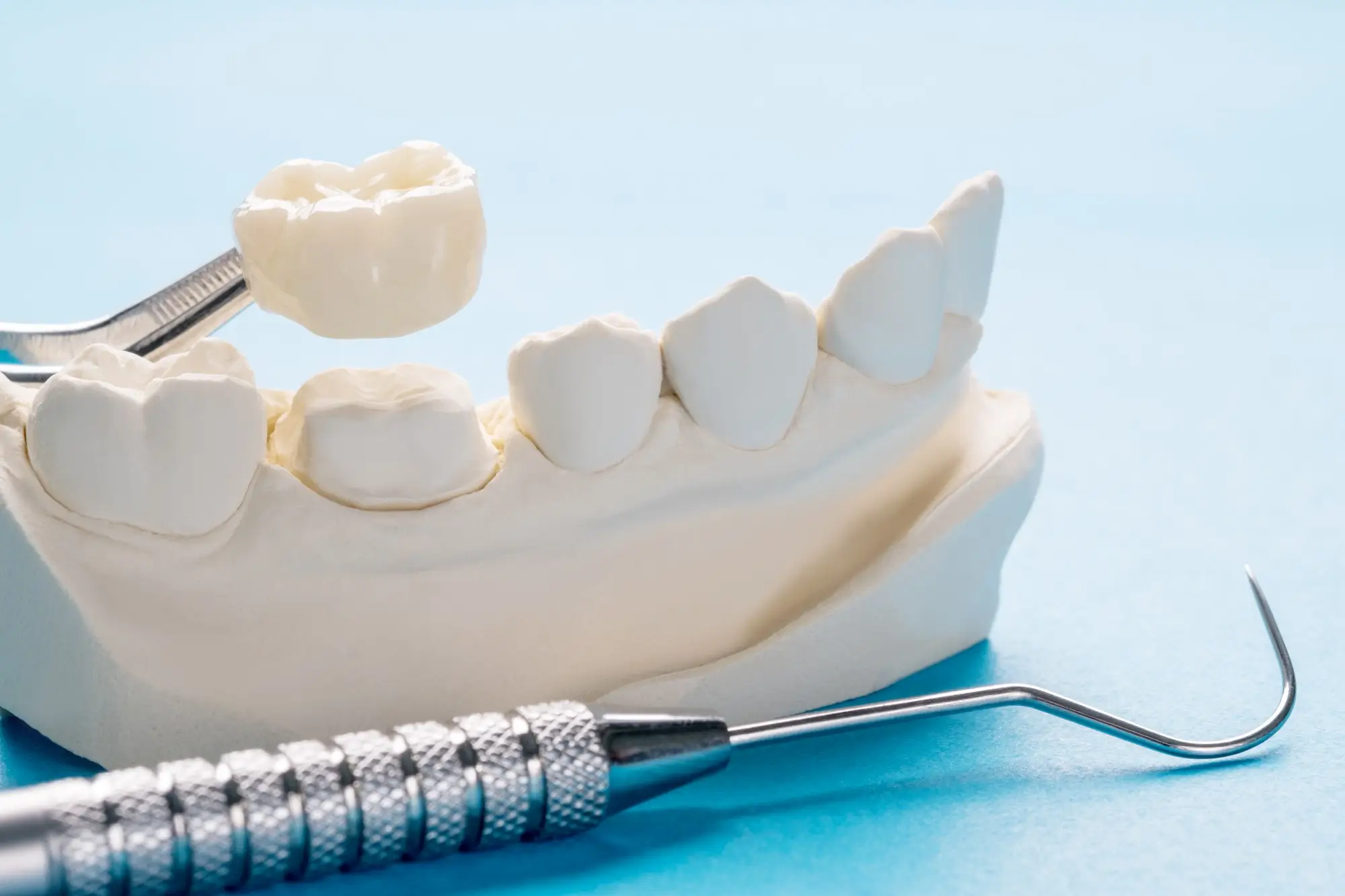In this article, We want to dive deeper into advances in dental crown techniques. These advances include: Modern Bio materials (All-Ceramic Materials, E-max Crowns,Composite Resins, Bioactive and Smart Materials) and Digital dentistry (CAD/CAM Technology and Digital Impression System). Also future trends and innovations in these field have been discussed.
If you want to find a professional dentist and Dental Crown Services, you can call us at Fortune Smiles Dental.
Introduction to Advances in Dental Crown Techniques
Dental crowns have evolved significantly over the years, driven by advances in technology, materials science, and patient expectations. This section provides an overview of the latest innovations in dental crown techniques, highlighting the transformative impact on patient care and treatment outcomes.
Overview of Dental Crowns
Dental crowns, also known as caps, are prosthetic devices placed over damaged or weakened teeth to restore their shape, size, strength, and appearance. Traditionally, crowns were fabricated using materials like metal alloys (e.g., gold or silver) or porcelain-fused-to-metal (PFM), offering durability and functionality but often lacking in aesthetic appeal.
Read it: Dental Crown Materials
Advancements in Material Science
Recent years have seen remarkable advancements in dental materials, revolutionizing crown fabrication. Modern ceramic materials such as zirconia and lithium disilicate (E-Max) have gained popularity due to their superior strength, aesthetics, and biocompatibility. These materials mimic natural tooth enamel, offering durability while seamlessly blending with surrounding teeth.
Digital Dentistry: CAD/CAM Technology
One of the most significant advancements in dental crown techniques is the adoption of computer-aided design (CAD) and computer-aided manufacturing (CAM) technology. CAD/CAM allows for the precise digital design and fabrication of dental crowns from high-quality ceramic blocks. This technology enhances accuracy, reduces turnaround times, and improves the fit and longevity of crowns compared to traditional methods.
Patient Benefits and Expectations
Patients benefit greatly from these advances, experiencing reduced treatment times, enhanced comfort, and superior aesthetic outcomes. The ability to customize crown design digitally ensures optimal fit and function, catering to individual patient needs and preferences. Furthermore, advancements in materials contribute to longer-lasting restorations that maintain natural tooth structure and support long-term oral health.
Impact on Dental Practice
For dental professionals, integrating advanced crown techniques enhances practice capabilities and patient satisfaction. Practices equipped with CAD/CAM systems can offer same-day crown services, eliminating the need for multiple appointments and temporary crowns. This streamlined approach improves workflow efficiency and allows dentists to deliver precise, customized care that meets modern standards of excellence.
By adopting principles of biocompatibility, prevention, and patient-centered care, holistic dentistry at Fortune Smiles Dental Care aims to provide safe, effective, and personalized dental treatments that promote long-term health and happiness.

Digital Dentistry and CAD/CAM Technology
Digital dentistry, powered by CAD/CAM technology, has revolutionized the field of dental crown techniques, offering unprecedented precision, efficiency, and patient satisfaction. This section explores how CAD/CAM technology is reshaping crown fabrication processes and enhancing treatment outcomes.
Evolution of CAD/CAM Technology
CAD/CAM technology represents a paradigm shift in dental crown fabrication, moving away from traditional manual methods to fully digital workflows. The evolution of CAD/CAM systems has enabled dentists to create highly accurate, custom-designed crowns using computer-generated models and automated milling machines. This eliminates the variability associated with traditional handcrafted crowns and ensures consistent quality and fit.
Digital Impression Systems
Central to CAD/CAM technology is the use of digital impression systems, which capture precise three-dimensional images of the patient’s teeth and surrounding structures. Digital impressions replace conventional putty-based impressions, offering superior accuracy and patient comfort. These digital scans are used as the foundation for designing crowns digitally, allowing dentists to visualize and manipulate virtual models to achieve optimal restoration outcomes.
Read it: Advances in Dental Bridges
CAD Design Process
In the CAD phase, dental professionals use specialized software to design crowns based on the digital impressions. CAD software enables precise customization of crown dimensions, contours, and occlusal surfaces to match the patient’s unique dental anatomy. Dentists can adjust parameters such as crown thickness, margin fit, and surface texture, ensuring aesthetic harmony and functional integrity.
CAM Milling and Fabrication
Following CAD design, CAM milling machines fabricate crowns from high-quality ceramic blocks or composite materials. These milling machines operate based on the digital design specifications, carving out crowns with micron-level precision. CAM technology offers rapid production of crowns within a single appointment, eliminating the need for traditional laboratory processes and temporary restorations.
Advantages of CAD/CAM Crowns
CAD/CAM crowns offer numerous advantages over traditional crowns, including:
- Precision Fit: Digital design and milling ensure precise fit and minimal adjustments during placement.
- Time Efficiency: Same-day crown services reduce chairside time and eliminate the need for multiple appointments.
- Aesthetic Customization: CAD software allows for detailed customization of crown aesthetics to match natural teeth.
- Patient Comfort: Digital impressions are more comfortable for patients compared to traditional impressions.
- Longevity: High-quality materials and precise fabrication contribute to durable and long-lasting restorations.
Clinical Applications and Case Studies
Real-world applications of CAD/CAM technology demonstrate its efficacy in diverse clinical scenarios. Case studies highlight successful outcomes in single-tooth restorations, multi-unit bridges, and implant-supported crowns. Digital workflows enable dentists to achieve predictable results and address complex cases with confidence, enhancing patient satisfaction and treatment success rates.
Future Directions in CAD/CAM Technology
Looking ahead, ongoing advancements in CAD/CAM technology promise further innovation in dental crown techniques. Future developments may include improved software algorithms for enhanced crown design, integration with artificial intelligence for predictive modeling, and expanded material options for personalized patient care. These advancements aim to elevate standards of dental care, making CAD/CAM technology an indispensable tool in modern dentistry.
Conclusion
Digital dentistry and CAD/CAM technology have transformed dental crown techniques, offering unparalleled precision, efficiency, and patient-centered care. As dental practices embrace these technologies, they enhance treatment outcomes, streamline workflows, and elevate the patient experience. The evolution of CAD/CAM represents a significant milestone in dental innovation, paving the way for customized, high-quality dental restorations that meet the diverse needs of patients worldwide.
Read it: Biomimetic Applications in Dental Crowns
For consulting about dental crowns, please contact us.
Biomaterial Innovations in Crown Manufacturing
Advancements in biomaterials have significantly expanded the options available for dental crown manufacturing, offering improved aesthetics, durability, and biocompatibility. This section explores the latest innovations in biomaterials and their impact on modern dental crown techniques.
Traditional Materials vs. Modern Biomaterials
Historically, dental crowns were predominantly fabricated from metal alloys such as gold or silver, prized for their strength and durability. While effective, metal crowns often lacked aesthetic appeal, particularly in visible areas of the mouth. Porcelain-fused-to-metal (PFM) crowns introduced a more aesthetic option by combining the strength of metal with a tooth-colored porcelain exterior.
Emergence of All-Ceramic Materials
The advent of all-ceramic materials marked a significant advancement in dental crown technology, addressing both aesthetic and functional requirements. Zirconia-based ceramics have gained popularity due to their exceptional strength, biocompatibility, and natural translucency. Zirconia crowns offer superior durability compared to traditional materials, making them suitable for posterior restorations where strength is critical.
Read it: Advances in Dental Implant Techniques
Lithium Disilicate (E-Max) Crowns
Another notable biomaterial innovation is lithium disilicate, commercially known as E-Max. E-Max crowns are renowned for their high strength, fracture resistance, and optical properties that closely mimic natural tooth enamel. These crowns are particularly favored for anterior restorations where aesthetics are paramount, providing patients with durable, natural-looking smiles.
Composite Resins and Hybrid Materials
Composite resins and hybrid materials represent versatile options in dental crown manufacturing, combining resin-based materials with ceramic fillers or fibers. These materials offer aesthetic benefits similar to ceramics while providing enhanced fracture resistance and ease of repair. Hybrid crowns are gaining popularity for their ability to achieve lifelike aesthetics and long-term durability in clinical practice.
Bioactive and Smart Materials
Recent research has explored bioactive materials that promote tissue regeneration and integrate with surrounding dental structures. Bioactive ceramics release ions such as calcium and phosphate, supporting remineralization and strengthening of tooth enamel adjacent to the crown. Smart materials, incorporating sensors or drug delivery systems, show promise in monitoring oral health metrics or delivering therapeutic agents within the oral cavity.
Advantages of Biomaterial Innovations
The adoption of biomaterial innovations in dental crown manufacturing offers several advantages:
- Enhanced Aesthetics: Natural-looking materials like zirconia and E-Max enhance smile aesthetics, blending seamlessly with natural teeth.
- Improved Strength and Durability: High-strength ceramics and hybrid materials provide long-lasting restorations that withstand biting forces and daily wear.
- Biocompatibility: Biomaterials are biologically compatible with oral tissues, reducing the risk of allergic reactions or adverse tissue responses.
- Minimized Tooth Preparation: Conservative crown designs preserve more natural tooth structure, promoting long-term oral health and vitality.
Clinical Applications and Case Studies
Clinical studies highlight the efficacy of biomaterial innovations in various clinical scenarios, demonstrating their ability to achieve predictable outcomes and patient satisfaction. Case examples showcase successful applications in single crowns, multi-unit bridges, and implant-supported restorations, underscoring the versatility and reliability of modern biomaterials.
Future Directions in Biomaterials
Future advancements in biomaterials for dental crowns may focus on bioactive coatings, nanotechnology enhancements, and personalized materials tailored to individual patient needs. Innovations in 3D printing technology could revolutionize crown fabrication by enabling customized designs and material compositions that optimize both form and function.
Conclusion
Biomaterial innovations represent a cornerstone of modern dental crown techniques, offering practitioners and patients alike a diverse array of options that prioritize aesthetics, durability, and biocompatibility. As dental practices continue to embrace these advancements, they enhance treatment outcomes and elevate the standard of care in restorative dentistry. The evolution of biomaterials underscores ongoing commitment to innovation and excellence in dental healthcare.

Future Trends and Innovations in Dental Crown Techniques
The future of dental crown techniques is poised at the intersection of advanced technology, innovative materials, and patient-centered care. This section delves deeper into emerging trends that are shaping the landscape of dental crown techniques, offering insights into transformative innovations and their potential implications for dental practices and patient outcomes.
Advancements in Digital Workflow
The integration of digital workflows represents a cornerstone of future advancements in dental crown techniques. Artificial intelligence (AI) and machine learning algorithms are revolutionizing treatment planning and crown design processes. AI-powered software analyzes patient data, including intraoral scans and medical histories, to generate highly accurate digital models for crown fabrication. These advancements enhance precision, optimize material selection, and streamline workflow efficiency in dental practices.
Virtual reality (VR) simulations are also gaining traction in dental treatment planning, offering immersive experiences that enable dentists to visualize treatment outcomes and simulate procedural steps before actual implementation. VR technology facilitates patient education and enhances communication between dental professionals and patients, fostering greater confidence and satisfaction in treatment decisions.
3D Printing in Crown Fabrication
The advent of additive manufacturing, particularly 3D printing technology, promises to redefine crown fabrication processes by offering unparalleled customization and efficiency. 3D printers use digital CAD/CAM designs to build crowns layer by layer from a variety of biocompatible materials, including ceramics, resins, and metals. This additive approach reduces material waste, shortens production times, and enables on-demand manufacturing of crowns tailored to individual patient needs.
The versatility of 3D printing extends beyond crown fabrication to include the creation of surgical guides for implant placements, orthodontic appliances, and prosthetic devices. Dental practices equipped with 3D printing capabilities can offer same-day crown services, eliminating the need for multiple appointments and temporary restorations. This rapid turnaround enhances patient convenience and satisfaction while maintaining high standards of clinical precision and aesthetic quality.
Biological Integration and Regenerative Techniques
Future advancements in dental crown techniques are increasingly focused on promoting biological integration and tissue regeneration. Bioactive materials, such as bioactive ceramics and biodegradable polymers, interact with the body’s natural healing processes to stimulate tissue growth and enhance biocompatibility. These materials release beneficial ions, such as calcium and phosphate, promoting remineralization and strengthening surrounding tooth structures.
Regenerative techniques aim to restore dental tissues affected by decay, trauma, or congenital conditions through innovative approaches like stem cell therapy and tissue engineering. Stem cells derived from dental pulp or other sources hold promise for regenerating dentin, enamel, and periodontal tissues, offering potential alternatives to traditional crown treatments. Researchers continue to explore biomimetic strategies that mimic natural tooth development and repair mechanisms, paving the way for regenerative dentistry solutions that preserve tooth structure and function over the long term.
Personalized Medicine and Genetic Insights
Advancements in personalized medicine are transforming dental care by leveraging genetic insights to tailor crown techniques to individual patient profiles. Genetic testing enables dentists to identify genetic predispositions to oral health conditions, such as enamel defects or periodontal diseases, influencing treatment planning and material selection for dental crowns. Precision medicine approaches optimize treatment outcomes by considering genetic variations, metabolic factors, and lifestyle influences that impact oral health and treatment responses.
Additionally, digital technologies facilitate virtual consultations and remote monitoring of dental conditions, expanding access to specialized care and enhancing patient engagement. Tele-dentistry platforms enable dentists to deliver personalized treatment plans, provide ongoing support, and monitor treatment progress remotely, improving continuity of care and patient outcomes.
Environmental Sustainability in Dental Materials
Environmental sustainability is becoming increasingly important in dental crown techniques, prompting the development of eco-friendly materials and practices. Biodegradable polymers derived from renewable resources offer sustainable alternatives to traditional crown materials, reducing environmental impact and promoting eco-conscious dentistry. Recyclable ceramics and responsibly sourced metals contribute to reducing carbon footprints in dental laboratories and practices, aligning with global efforts to achieve sustainable healthcare practices.
Ethical and Legal Considerations
As dental technologies evolve, ethical and legal considerations play a crucial role in ensuring patient safety, privacy, and informed consent. Dentists and dental professionals must adhere to ethical guidelines and regulatory standards when implementing new technologies, safeguarding patient data and maintaining confidentiality. Informed consent processes are essential in educating patients about treatment options, potential risks, and benefits associated with advanced dental crown techniques, fostering trust and transparency in dental healthcare delivery.
Conclusion
The future of dental crown techniques is characterized by innovation, integration of advanced technologies, and a commitment to personalized, patient-centered care. Emerging trends such as AI-driven digital workflows, 3D printing, regenerative techniques, and personalized medicine are reshaping the landscape of restorative dentistry. By embracing these advancements, dental practices can enhance treatment outcomes, improve patient satisfaction, and uphold the highest standards of clinical excellence and ethical practice.

